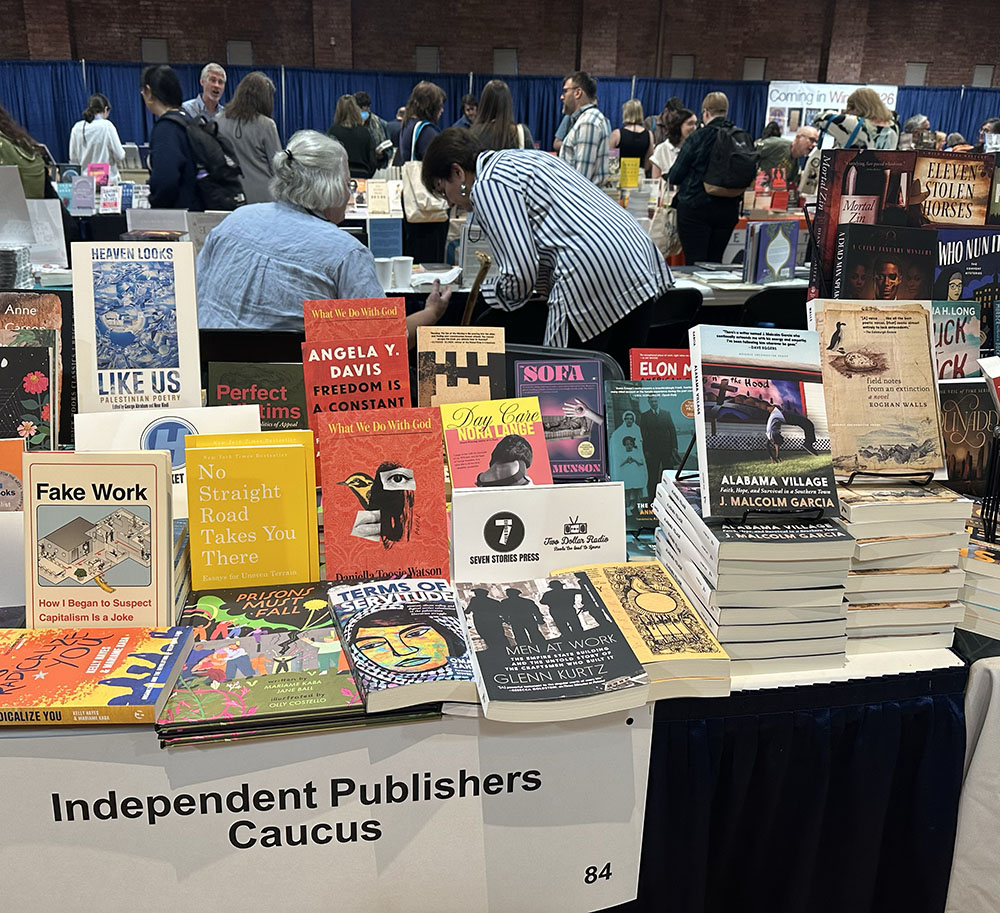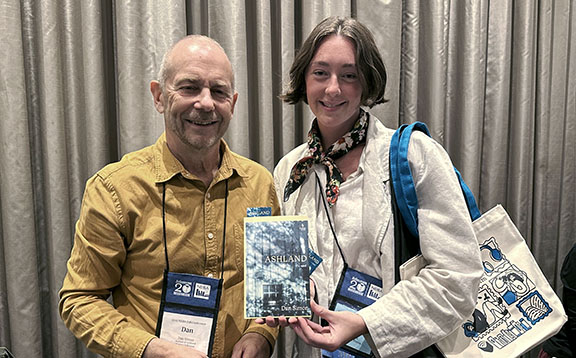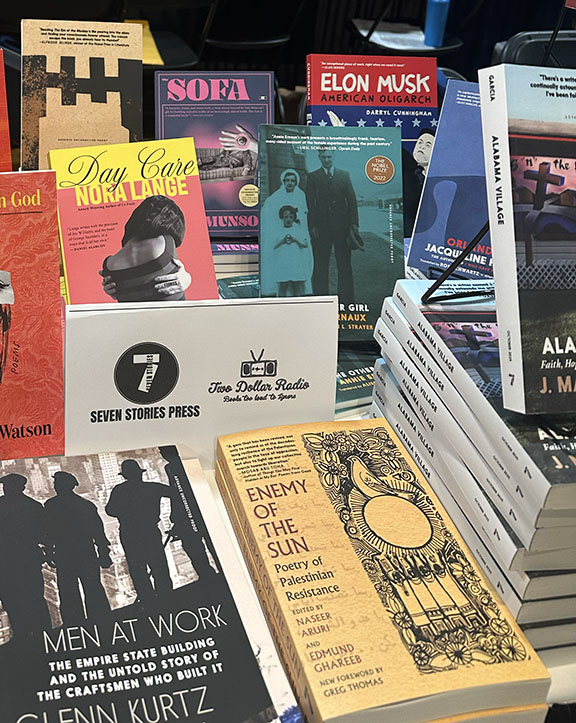Marguerite Duras died on March 3, 1996, almost twenty-two years ago to the day. An astonishingly prolific novelist, she was also an accomplished director of films. Subtle, strange, canny, provocative, her work in both media lasts till this day. In honor of her work, please find below a 1970 interview with Duras, touching on her view of cinema, May '68, and much else. The interview, conducted by Jacques Rivette and Jean Narboni, was originally published in the Evergreen Review, and can be found in From the Third Eye: The Evergreen Review Film Reader, out from Seven Stories next week. We hope you enjoy.
Question: It seems you want more and more to give successive forms to each of the things—let’s not use the word “stories”—that you write… for instance, The Square, which had several versions, or La Musica, which also had several forms, or L’Amante anglaise. This corresponds to…
Answer: To the desire that I always have to tear what has gone before to pieces. Destroy, She Said is a fragmented book from the novelistic point of view. I don’t think there are any sentences in it. And there are directions that are mindful of screen plays: “sunshine,” “seventh day,” “heat,” “intense light,” “twilight”—do you see what I mean? I would like the material that is to be read to be as free as possible of style. I can’t read novels at all any more. Because of the sentences.
Q: When you wrote these stage directions, was the idea of a film lingering in your mind? Or was it simply because you could only write in this form?
A: I had no idea of a film, but I did have the idea of a book … of a book that could be either read or acted or filmed or, I always add, simply thrown away.
Q: In any case, you had theater in mind somehow…
A: Yes, yes, Claude Régy was to stage it, but I made the film first, I couldn’t help it … I believe it necessary to create things that are more and more timesaving, that can be read quickly, that give the reader a more important role. There are ten ways to read Destroy, She Said; that’s what I wanted. And ten ways to see it, too. But, you know, it’s a book I hardly know at all. I know the film better than the book; I wrote the book very quickly. There was a good scenario, called “The Chaise Longue,” which we tried to film; but it came out of a certain kind of psychology, maybe a searching one, but psychology nonetheless; and Stein wasn’t in it …
Q: Did the scenario come before the writing of the book?
A: “The Chaise Longue,” yes. There were only three characters. Still, as a story it was obviously classical. When I found Stein, the scenario wasn’t any good at all any more, and we threw the whole thing out that same day.
Q: I was struck by an interesting contrast between film and book. The directions for the characters are very brief in the book, but a number of acts and gestures in the book are omitted from the film. In the end, the film is a kind of mechanical process that is exactly the opposite of the one whereby a bad filmmaker who adapts a book keeps the events, the facts, the physical acts, and leaves out everything which would seem, on the contrary, to belong to the writing itself. And here one has the impression that you took out everything that would seem to stem directly from “cinema,” and that you kept what would seem to belong to the realm of literature.
A: That is correct; I had a feeling that this was so. Are you thinking of any special gesture?
Q: I’m thinking of several: the moment, for example, when Stein strokes Alissa’s legs. The only part of this passage that is left in the film is the conversation.
A: It so happens that during rehearsals I realized that it was impossible, because of Michel Lonsdale, who is gigantic. He was too important, if you like, sitting there at Alissa’s feet, close to her legs. I had to keep him away from the other two, so that they wouldn’t be completely overwhelmed. So it was really for practical reasons that I came to omit this gesture. I worked on the possibility of keeping this gesture for a long time. I wasn’t able to do so, and I’m sorry.
Q: But there were rehearsals that took place before…
A: They were at my house. For a month and a half.
Q: Did you rehearse everything before shooting?
A: Yes.
Q: But wasn’t it also true that Stein at that point was too much on the same plane as the other characters? Or was it just this one gesture that was impossible?
A: Oh, it’s very hard to say why it was impossible. It wasn’t possible; it obviously wasn’t possible. Or else it would have been necessary for him not to say anything. It was a choice of either the gesture or the dialogue. I think it was because of Michel’s size. What did you think of him in the film?
Q: He is magnificent. He is always a very great actor, but here he is even more of one; it’s really great to see him finally being used…
A: This was the first time. The first time he has ever been used like that…
Q: And did the other actors come to mind immediately? This is one of the things that make the film really impressive: the choice of the five actors, the way they harmonize. And I personally was flabbergasted when Gélin was used.
A: I thought of Gélin almost immediately. The hardest one to find was Max Thor: Garcin.
Q: Destroy, She Said is made up structurally of people watching each other at different levels. For example, someone is watching the tennis court and is watched by someone else, who in turn is observed by a third party, and the narrator, or whatever plays a narrative role, more or less takes up these stories and sees what these watching eyes see…
A: You see a narrator? … It is the camera.
Q: Does it exist as a watching eye?
A: Yes, in the film.
Q: Perhaps the expression “watching eye” is not the right one. Let’s say, then, a last determining factor, a last court of appeal.
A: As if someone wanted to tie the whole thing together?
Q: No, it is not something static, but a watching function, so to speak.
A: But this watching function can also be called identification with the character. Do you agree with that? With the sacred law that Sartre laid down in an article answering Mauriac, I believe, about twenty years ago, in which he said that one could identify only with one person. To reach the other characters it is necessary, therefore, to do so through the character with which one identifies: if there are A, B, C—A being the spectator and the character with whom one identifies, one must go through him in order to reach B and C.
Q: Yes. Sartre accused Mauriac of taking himself for God and dominating all the characters.
A: That’s right. But this is a law that has applied to spectacles for centuries now. And to novels, too. I attempted to break this law; I don’t know whether I succeeded. There is no primacy of one character over another in Destroy, She Said. There is a gliding from one character to another. Why? I think it’s because they’re all the same. These three characters, I believe, are completely interchangeable. So I went about things in such a way that the camera is never conclusive with regards to the way one of them acts or the words that another speaks. What one of the men says could also be said by the other. What the other says, the third person, Alissa, might say as well. The men are slightly different from Alissa, it is true, since she doesn’t speak of the men, whereas the men speak of her. She never judges. She never goes on to think in generalities.
Q: That is to say that you confronted the risk that the camera might become God…
A: This is a nineteenth-century prejudice that still holds sway in filmmaking…
Q: You refused this sort of closure that always makes the camera enclose a space or imprison a character by making it assume multiple roles, in the same way that the characters are interchangeable throughout the film.
A: Yes, that’s it, that is what I tried to do.
Q: This is strikingly evident from the very first shots, shots that I saw in the beginning as representing the watching eye of a character and then in the end, within the very movement of the shot, focusing from the outside on this very character whose eyes the spectator thought he was seeing through.
A: In my script, moreover, there are many directions that point to what you are saying: “So and so is seen watching someone else.”
Q: This was in the book, too, but it was indicated by other means—the means of the book.
A: But it is the relation between the people that isn’t right, perhaps, in Destroy, She Said.
Q: In any case it is a film in which the spectator is obliged to pay close attention to the way in which the camera behaves toward the characters. And for that very reason it is fundamentally different from La Musica, where the camera had a much more traditional role in relation to the characters.
A: From the point of view of the camera, I’m not sure quite what I did; you’re teaching me things… When I planned it, it seemed to me that that was what had to be done, but I did so almost without thinking it out beforehand.
Q: There is one passage where the difference between the book and the film is quite striking: the first long dialogue—or perhaps the very first dialogue of all—between Alissa and Elisabeth. In the book this is interrupted by the gaze and the words, the commentary of Max Thor and Stein, and which in the film, on the contrary, is continuous, though the spectator may think that this continuous gaze of the camera corresponds to the point of view of the men, or of one of the two men, on the two women.
A: Yes, that posed a problem. If the men had been shown watching the women, Alissa would have known that she was being watched. And she would have been a bit more cagey with Elisabeth Alione; knowing that she was being watched, and acting as if she were not being watched. I could not bear the least suggestion of caginess on Alissa’s part… The men are behind a bay window… There are voices offscreen during the dialogue between the two women. During the dialogue, there is: “In the bedroom Alissa has no certain age.” “It is the void that she is looking at…” And then I wanted the two women to be alone. It’s a long scene. No, it isn’t too long: I cut a little bit of it… This long stretch of time… Dull. Banal. Dirty and gray… would have obviously been broken up. You can imagine how hard I had to fight to keep this scene this long. Many people said to me: “It’s impossible; they exchange nothing but banalities.” But that’s exactly the point…
Q: But was it for practical or other reasons that there are a number of shifts of scene from the book to the film? Scenes which, for instance, took place in the book in the main dining room of the hotel take place outside in the film, or vice versa.
A: It was because we had only one room to shoot in, one room and a little adjoining room.
Q: You, in fact, didn’t have a room representing the main dining room of the hotel?
A: Yes, but we finally replaced it with a terrace. We didn’t have a hotel building. Someone had loaned us the grounds, and an old converted stable…
Q: So it’s for purely practical reasons that you shifted various scenes.
A: Yes, yes. But there were two possibilities—outside or inside—for all the scenes.
Q: But did you intentionally change from inside scenes to outside ones, or on the contrary…
A: This was done deliberately, and what is more, I couldn’t do anything else because the weather was bad. I took the scene of Alissa’s arrival with her husband out of doors, for example, because I had filmed the preceding scene indoors since the weather was bad… the scene with the letter.
Q: The card-playing scene, too?
A: Yes, and then, too, there were some scenes that in any case could only be indoors: there are two of them. Because the dialogue would have gotten lost outside, it seems to me.
Q: This is obvious in the case of the second long scene between the two women, which was also indoors in the book, but not in a bedroom, as I remember.
A: It was in Elisabeth Alione’s bedroom. No, it was in the dining room. They both act well in this scene.
Q: And all through the film. The card game is a very extraordinary moment. What Catherine Sellers does in this scene is really tightrope-walking. But it is beautiful, because you aren’t aware that it’s tightrope-walking.
A: It was awesome. Really awesome. Because at the same time there is the way she handles the cards, which changes little by little. She completely forgets everything she knows in a few seconds. But she really did this all by herself: no one can lay down rules for a thing like that. She played cards all by herself at home; she didn’t know how to hold a card before the film.
Q: I had the feeling that the playing of the hands of the three other players around her was very precise, very closely controlled.
A: We focused on their hands: the camera came in close and once their hands were in the film frame they were free, except for Stein, who had to stay in the foreground with his cards. So inevitably he was constantly in front of the camera, rooted to the spot… We rehearsed the card game spot for a month. And at the end of the month I realized that it was completely useless to see the others, that their hands alone were enough…
Q: To get back to the question of the role of the camera that we were discussing a moment ago, there is another moment that struck me, but this time it’s a passage that’s been cut up, the scene—the next to the last scene, if one can divide the film into scenes—of the five characters around the table where there is an overall shot that recurs from time to time and punctuates the sequence, and closeups of the five of them. What especially impressed me was that the closeup of Daniel Gélin is from a point of view that seemed to me to be clearly that of Elisabeth, from the very way in which people’s gazes are oriented…
A: Yes. That is to say, all the other angles have been abandoned; this gave us some trouble, as a matter of fact, during the montage. We abandoned all the other angles in favor of the one that passes through Elisabeth. The scene where they eat together caused me so much trouble… I abandoned one angle completely because from the other side of the window that is in view, from the broad grassy plot, there was a window with bars over it. I could not shift the angle; that is to say, this window with bars over it would have reminded the audience of a mental institution. I didn’t want that. So I had a white curtain hung up. But this white curtain was worse than nothing at all because it gave the impression that there was another room, that Gélin, as seen in the angle of the window, was suddenly elsewhere. So removing those two angles resulted in there being only one angle in the end.
Q: But this is where the role you would like the viewer of the film to take begins—to install Elisabeth in the camera’s place, and situate even the absence of Elisabeth there, so that the same angle, the same diagonal, continues to run toward Gélin. I had the impression that there was this sort of line linking Bernard Alione and Elisabeth that became even more powerful precisely when Elisabeth is supposed to be on the grounds of the hotel…
A: It’s a sort of line of force, since Gélin resorts to Elisabeth in order to know what is happening. He often says: “What is happening?” and looks to his wife to tell him what is going on…
Q: Yes, and at the same time, it’s not as if he were judged by her, but still were more than looked at, more than merely observed. It’s as if this angle, which has to do with Gélin, made her suddenly see him as if she had never seen him before… She discovers him through the medium of the three others. And the role of the camera emphasizes this fact strongly.
A: She is already inside the dialectic, in a sort of natural dialectic that she has either found anew or discovered… But there are two characters who belong entirely to me, and two characters who do not belong to me in the film. I don’t know whether this is noticeable. Alissa and Stein are completely familiar to me, whereas Thor and Elisabeth are characters outside myself.
Q: Thor is the most opaque character.
A: He’s asleep… Thor is in a sort of catharsis: he is in this state when he meets Stein, and at the end of the book and the end of the film he still is; they are identical. In the end Thor asks Stein only three questions—and it is all over. After that he talks like Stein. As early as the meal they eat together he talks like Stein. They are interchangeable… They are equally indecent. I wanted their indecency to be absolute; I don’t know whether I succeeded in showing it to be so. Immodesty and indecency. But natural. This was what was hardest to get out of the actors. But they managed in the end. Garcin is an adorably humble person, you know. As he had had very different roles in the theater, he was ready to do anything to change. All five of them are absolutely marvelous. Shall we talk about the ending?
Q: Was the ending of the book as noisy for you as the last shot in the film?
A: No.
Q: In the book there is a brief notation having to do with the importance of the music whereas in the last shot of the film the sound effects are very important.
A: And the poses are different too; in the book Alissa was lying on top of Stein, as if on a plot of ground, a piece of land. She was stretched out on Stein’s physical body. This was not possible in the film. A change was necessary because of the image. Because Stein was then completely immobilized by Alissa’s body. And the music—in order for the whole thing to take on meaning… The music stands for revolution. I had to murder it up to the very end… if it had suddenly been very pure and very carefully decanted…
Q: One feels that the music is a struggle…
A: I would have liked to distort it even more, but I didn’t find any way of doing so. The noise is a piano. It’s a Pleyel concert grand. The scene takes place in a salon in the middle of the hotel grounds, with the windows open and the piano open, and we let the piano lid fall. During the montage the attack of the notes was cut off, and all the harmonics are heard. This is the noise on the sound track. Michael, the sound engineer, and I did it together one evening. But the mixing of the noise on the last reel was rather funny, because the engineer couldn’t bring himself to ruin the music. He simply couldn’t. I spent twenty minutes urging him to go to it. I gave him superb music and I told him: “Spoil it.” He couldn’t. And I said to him: “No, go ahead! Go ahead!” Finally he got desperate and did a thorough job of it… Don’t you want to talk about the political side of the film? Can I read you what I say in the trailer? I’m going to read it. Someone asks me the question: “Where are we?” “In a hotel, for example.” “Could it be some other place?” “Yes. It is up to the viewer to choose.” “Don’t we ever know what time it is?” “No, it is either nighttime or daytime.” “What’s the weather like?” “It’s a cold summer.” “Is there anything sentimental about it?” “No.” “Anything intellectual?” “Perhaps.” “Are there any bit players?” “They have been eliminated. The word ‘hotel’ is said, and that ought to be enough to represent a hotel.” “Is it a political film?” “Yes, very much so.” “Is it a film where politics are never spoken of?” “That’s right. Never.” “I’m completely lost now … what do you mean by ‘capital destruction’?” “The destruction of someone as a person.” “As opposed to what?” “To the unknown. That the communist world of tomorrow will be.” “What else?” “The destruction of every power…” I’m perhaps going to change that a little… “the destruction of all police. Intellectual police. Religious police. Communist police.” “What else?” “The destruction of memory.” “What else?” “The destruction of judgment.” “What else?” “I am in favor of… closing schools and universities, of ignorance…” I added the word “obligatory,” but this would amount to decreeing something. I go on: “I’m in favor of closing schools and universities. Of ignorance. Of falling in line with the humblest coolie and starting over again.” “Of falling in line with madness?” “Perhaps. A madman is a person whose essential prejudice has been destroyed: the limits of the self.” “Are they mad?” “They may be in today’s outmoded system of classification. Communist man of the year 2069, who will be the absolute master of his freedom, of his generosity, would be taken for a madman today and put behind bars.” “Why a German Jew?” “Please understand: we are all German Jews, we are all strangers. This is a slogan from the May revolution. We are all strangers to your State, to your society, to your shady deals.” “What is the forest?” “It is also Freud.” “You say that it is classified as a historical monument?” “That is quite correct. Freud and Marx are already pigeonholed by culture…” “Well, I’m going to… Is it a film that expresses hope?” “Yes. Revolutionary hope. But at the level of the individual, of inner life. Without which… look around you. it is completely useless to make revolutions.” That’s how it reads. So I’m out gunning for an entire part, a whole sector of the public…
Q: Do you really think that wiping the slate clean is the only…
A: What other means do you have of catching up with the rest of humanity? What other way do you have of reaching absolute zero? I went to Cuba a while ago. I spoke with students, I talked with people at the university. They said to me: “Should we read Montaigne? And Rabelais? We don’t have them here.” What would you have answered? Even if I had said no, I still would have been posing as an authority. I said: “I have no opinion.” So then. We won’t soon see the end of this state of affairs. And it doesn’t matter that we won’t. It is not because there is no solution that things are in a mess. May was a success. It was a failure that was infinitely more successful than any success at the level of political action.
Q: What disturbs me is the fact that people don’t want to think about the work that the person must do, work that your will sets before you at the zero point. I believe there is no escaping the work one has to do on oneself, by oneself.
A: But is this work in the strict sense? You know that work was invented in the nineteenth century…
Q: No, I’m speaking of a kind at work…
A: Inside the self?
Q: Inside and outside: an interaction, in fact, between one’s action on what for convenience’s sake is called the outside and then the return at one’s outer action back into oneself…
A: But one can’t escape this. And this action is always irreplaceable; it always remains strictly personal. No one can ever put himself in the place…
Q: That is exactly why it seems indispensable to me for this zero point to be lived precisely as work, and not as something to which one would abandon oneself. Because the moment one abandons oneself to it, there is the danger of purely and simply remaining there, of getting bogged down…
A: Good enough. And after that?
Q: And after that being duped. Being duped in one way or another.
A: Yes. But I much prefer being duped like that.
Q: But when I say duped, I don’t mean being carted off to an insane asylum. I mean duped because one has gotten caught up in a myth that is just as alienating as the old myths.
A: Yes, but then one would be responsible for one’s own alienation. These young people don’t want to do anything. Nothing at all. They want to be bums. I have a son who doesn’t want to do anything. He says straight out: I don’t want to do anything. He wrote me one day saying: “Be carefree parents; don’t feel responsible for my adolescence any more; I don't want to be a success at anything in my life; that doesn’t interest me. I’ll never do anything.” … Don’t get the idea that things were easy for me before I arrived at the point where I said to my son: “Do what you want to.” I had to do a fantastic amount of work on myself. Moreover, I believe I wouldn’t have written Destroy, She Said if I hadn’t had this child. He’s wild. He’s impossible, but he has found something… something that’s outside of all the rules. A freedom. He enjoys the use of his freedom. He possesses it. This is extremely rare… But since we’ve gotten far away from the film…
Q: Not all that far…
A: Were you perhaps shocked by the violence? By the way Bernard Alione was attacked during the meal? I cut some of the violence out …
Q: On the contrary, I found this scene very powerful and very true to life, all the more so in that it was a very difficult scene to do and the character played by Gélin might have been rejected early on and relegated to a sort of position as an outsider that would have been comfortable for the others, for the spectator, for the film, and for the director too…
A: He isn’t lost, is he?
Q: No. I was afraid, during the beginning of the scene, that it would become a real…
A: A trial? That was the danger…
Q: And to be truthful, I was more than relieved at the precise moment it became clear that he too could be “saved”—that isn’t the proper word…
A: Changed.
Q: Yes, that’s it.
A: He asks to stay. One day.
Q: And we realize he can be loved…
A: That’s right.
Q: And that moment is the point at greatest intensity in your film, and after it…
A: To me it’s the moment… yes, there’s no doubt that it’s the one that’s most important. “We could love you, too.” When they tell him that, they are being absolutely sincere. Aggression had to be prevented. They are indiscreet. They are immodest. But they don’t attack Bernard Alione. I don’t know, though, if that’s the way it appears in the film… I didn’t have them eat, you see. That may interest you. Because Bernard Alione would have been the only one eating. As in the book. He would have been ridiculous simply because he was eating, whereas eating is something that everybody does, both people who are asses and people who are not. So I eliminated this false ridiculousness… I replaced certain things. When Stein asks Gélin: “What sort of work do you do?” for example. Before, in the book, he answered: “I’m in canned goods.” Now he answers: “I’m a real-estate promoter.” I thought “canned goods” was too easy a way to ridicule him… It has something touching about it, and something naïve too.
Q: And the sort of haste on the part of Elisabeth, who finally almost goads Bernard into leaving just when he’s been asked outright to stay—do you intend this to be interpreted as a still greater distance from people, perhaps, than that of her husband, or a panicked reaction on the part of someone who feels close to…
A: This is the last time she panics. After this her panic disappears. The last death-throes, if you like. Before she kills her former life. When they say to her, “You vomited,” it’s her life that she’s vomited out. She doesn’t know this. All she knows is that it was gratifying. Elisabeth expresses herself in this movement. She leaves to protect her “interests,” interests that she then vomits up.
Q: I find the film quite a bit more complex than the book. In the book one has somewhat the impression which one loses in the film—that Stein is something of a dispenser of wisdom.
A: He says one thing about there being no need to suffer any more that illustrates what you are saying: “It’s not worth it to suffer, Alissa, not ever again, not anybody, it’s not worth it.” This is more or less what Bakunin said: “The people are ready… They are beginning to understand that they are in no way obliged to suffer”… For Philippe Boyer, in La Quinzaine littéraire, Stein is the one who “speaks the desire of Thor,” and who is going to allow him to go beyond modesty, the rules of the outside world, the world of order. For him Alissa is “the one who destroys and who brings on madness in all its power.” Many people have said that the characters in Destroy, She Said are mutants. That Stein, especially, is a mutant. I more or less agree.
Q: What struck me most was a sort of passage from numbness, in the full sense of the word…
A: A hippie numbness, almost…
Q: …to a waking state.
A: In Stein? Or in everybody?
Q: In all the characters. It is a film on a state of drowsiness, with escapes, with arousals from this state of numbness…
A: That pleases me a great deal. I was very frightened while I was writing it. I was fear itself.
Q: The word “destroy” comes much later in the film than in the book. And the film has: “She said: ‘Destroy.’”
A: This caused lots of misunderstandings. Because, when Thor and Alissa said it, when it was said as one person to another, between just the two of them, people thought that it was a reference to an erotic intimacy that did not concern the others. In the film the word is said in public. I take it to be a slogan.
Q: In the film Alissa acts by coming closer, by making contacts, even at a distance, by…
A: Tropisms… Nobody can bear her except Stein. She is not made for living and yet she is alive.
Q: She is discomfort, in the strongest sense…
A: Yes. She is anxiety itself. Live anxiety. Live innocence with no recourse to speech. I can’t talk about a character; I tell myself that the actors are going to read the thing, and say: “See, she prefers Alissa to Stein …” No, Stein is the character most like a brother to me… Would you like us to talk about conditions while shooting? The film was shot in fourteen days, after a month and a half of rehearsals, and it cost $44,000. I don’t know whether that will interest your readers.
Q: The $44,000 covered everything?
A: I don’t know. I couldn’t have done it without those rehearsals. But don’t get the idea that sequence-shots are shots that don’t cost very much. I’m afraid that that’s what people will say.
Q: What’s economical, often, is to cut.
A: Not necessarily. No. Just imagine: I have a hundred and thirty-six shots, but a good sixty of them weren’t used. The closeups of the meal. But I realized after shooting, during the rough cut, that what was interesting was the impact, for instance, during the card game, of the other characters’ words on Bernard Alione. It wasn’t the others saying “we’re German Jews,” it was Bernard Alione reacting to this. Or rather having it thrown at him. Then we cut down drastically on the number of closeups in general. But in fourteen days… Just imagine: we sometimes shot closeups one after the other, without even numbering them—if you can imagine that. It could have been dangerous. But it didn’t matter. One must let oneself go.
Q: What do you mean “let oneself go”?
A: Oh, I let myself drift along. Because I had used a certain emptiness in me as a starting point of the book. I can’t justify that now. After the fact. There are things that are very obscure which aren’t clear to me at all, even now, in the film. But I want to leave it like that. It doesn’t interest me to clear this up. For example, the direction all through the scene of Alissa arriving. The whole symbolism, when she says: “Where is the forest? Is it dangerous?” and then Thor says to her: “How do you know?” and she looks at him and says: “I’m looking at it, I see it…” Afterwards, a long time afterwards, I was able to justify this to myself, but at the moment it was completely instinctive. The forest at that moment was a danger that Thor had incurred. For he was attracted by Elisabeth Alione. And Alissa’s attitude was already a reassurance: “Don’t be afraid,” her husband said reassuringly. And I became aware of this long after I had directed the scene. When I saw the film, I said: “Well, that was exactly right.”
Q: Where does the shot with the words “I didn’t know that Alissa was mad” come in exactly?
A: She leaves the table. There’s a worm’s-eye view of her. And the voice of Stein offscreen saying: “You didn’t tell me that Alissa was mad.” Then Stein is seen, after he has spoken; then Thor says: “I didn’t know.” And after Thor, Stein says offscreen: “The woman I looked for for so long is Alissa Thor.” This is the only time that Alissa is called by her married name, to clearly indicate that Stein is in no way bothered by the fact that Alissa is married… Did you think that the two men were her lovers?
Q: It’s a question that never occurred to me.
A: I don’t know myself…
Q: The hair scene intrigued me…
A: It’s very obscure to me. She cuts her hair… it’s a bizarre gesture. This is one of the most obscure points, and I can’t describe it. I know that it is sacrificial… Were you afraid when you saw Destroy, She Said?
Q: Yes. Fear, as a matter of fact, that the film would stop being uncomfortable.
A: I’ve been told that it’s a frightening film. It frightens me … But it represents a break with everything that I’ve written for films: the couple… It doesn’t interest me any more at all now to do what I’ve already done before. I’d like to make another film on a text that I’m writing. It’s called: “Gringo’s Someone Who Talks.”
Q: Will it be written for the screen?
A: No. Another one of those famous hybrid texts… And it would be a little like Destroy, She Said as well, that is to say, a sort of superexposition of certain things—and the intrusion of the unreal, but not a voluntary one. That is to say that when it happens I leave it in. I don’t try to pass it off as realism.
Q: I wouldn’t use the word “unreal.”
A: I nonetheless believe that that word isn’t far off. But when I say the word “superexposition,” does it mean anything to you? And if I use the word “unreality,” you don’t see. How about if I use the word “surreality”?
Q: Yes, I’d understand that better, except that “surrealism” has the same connotations.
A: Hyper-reality. Yes. But where are we? This film… is not psychological in any way. We’re not in the realm of psychology.
Q: We’re, rather, in the realm of the tactile.
A: Yes, that suits me fine… That cuts me off from everything else in a strange sort of way… But as for Destroy, She Said I was really quite comfortable. Even though I was afraid. And at the same time, completely free. But frightened to death of being free…
Translated by Helen R. Lane



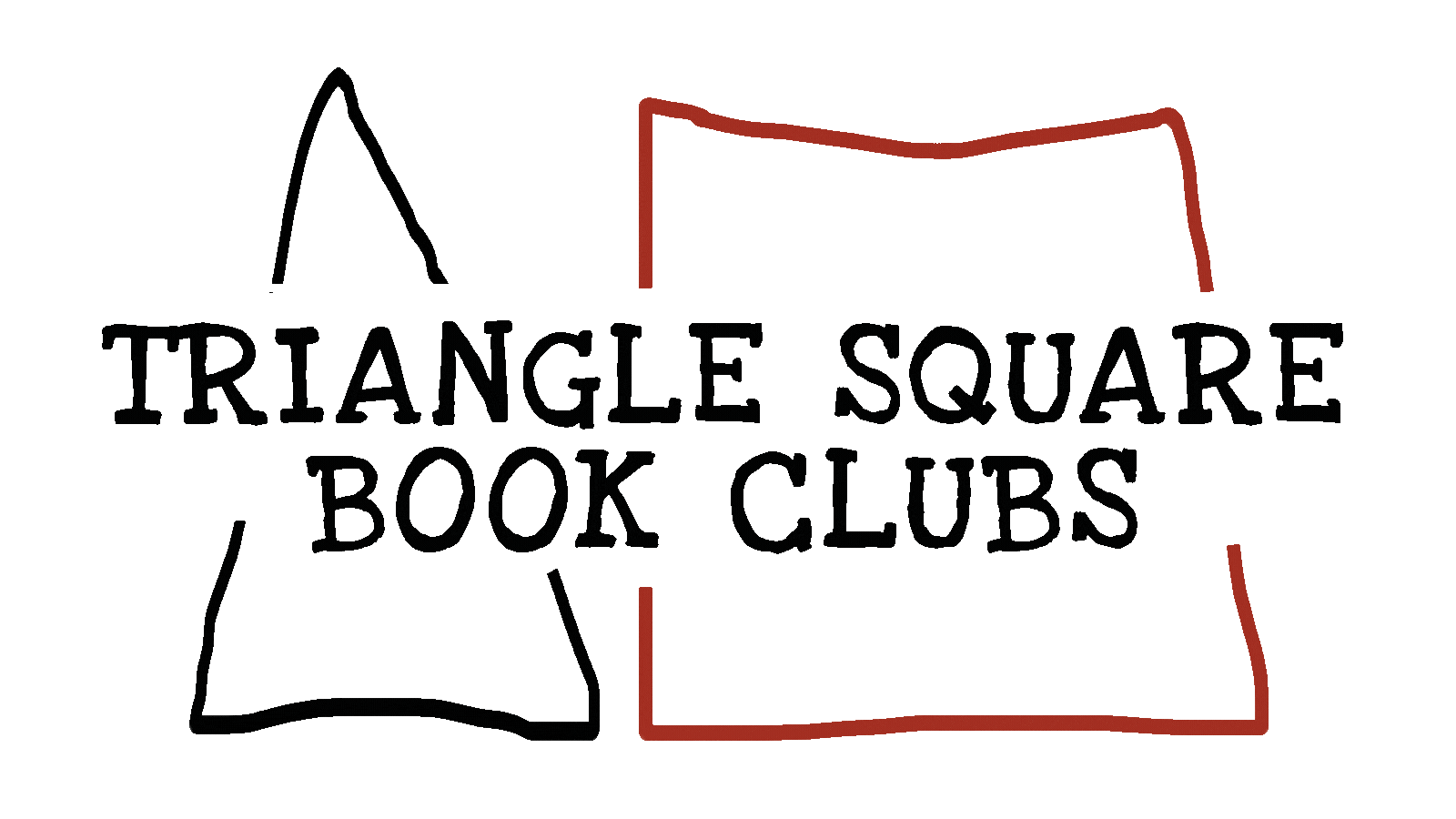
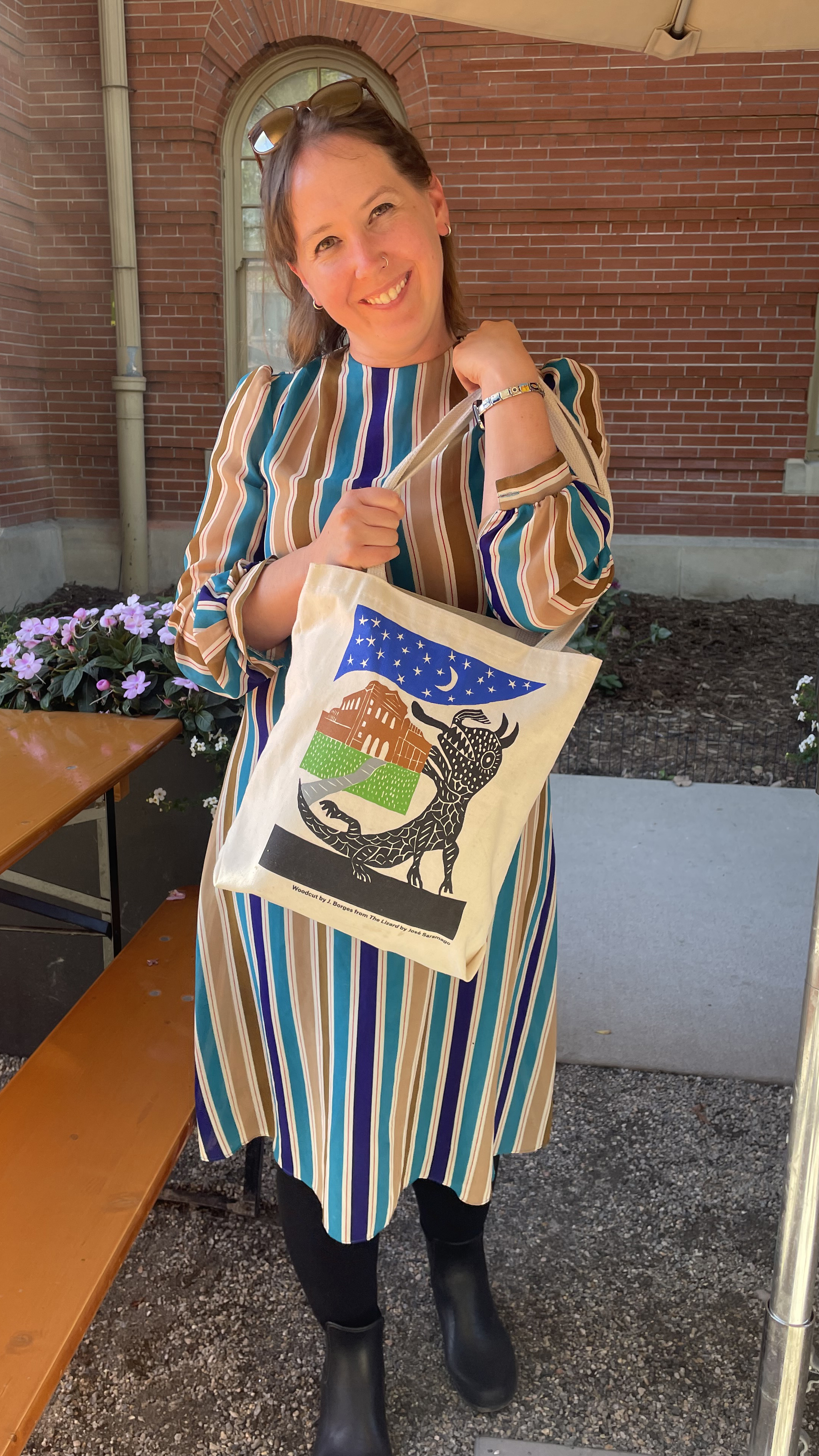
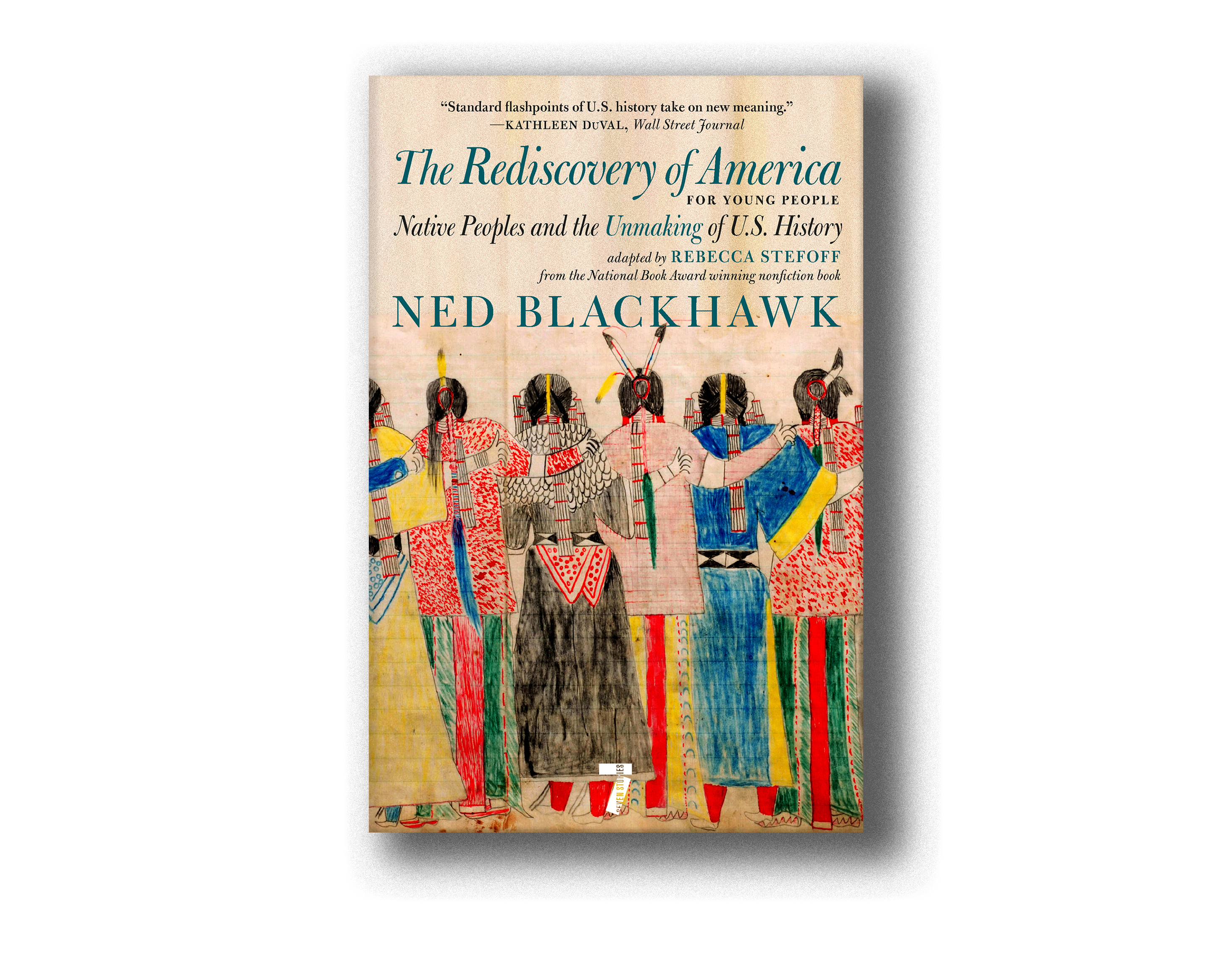
 British-Egyptian writer Alaa Abd el-Fattah, author of You Have Not Yet Been Defeated, was released last night from Wadi El-Natrun prison in Egypt and has since been reunited with his mother and one of his sisters in Cairo.
British-Egyptian writer Alaa Abd el-Fattah, author of You Have Not Yet Been Defeated, was released last night from Wadi El-Natrun prison in Egypt and has since been reunited with his mother and one of his sisters in Cairo. 